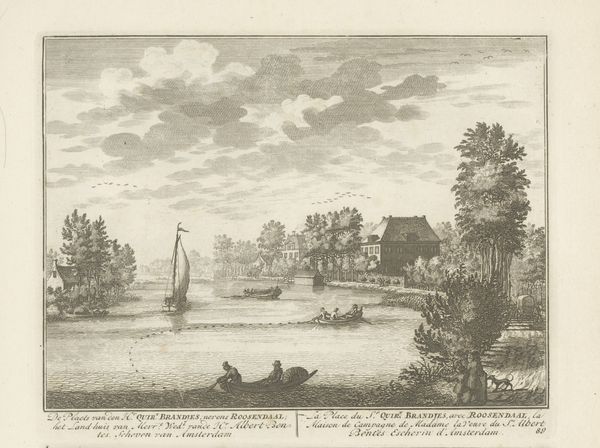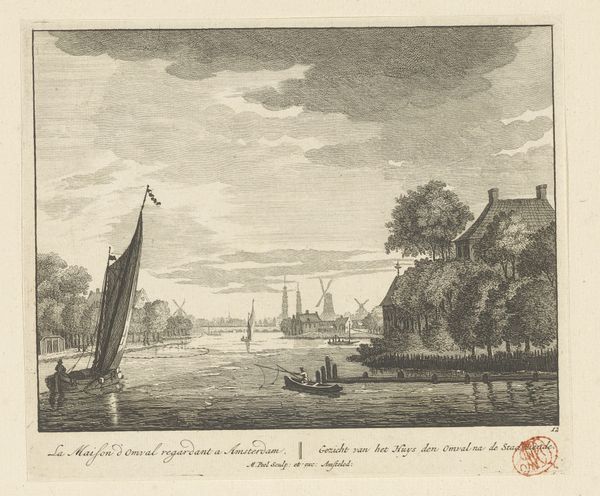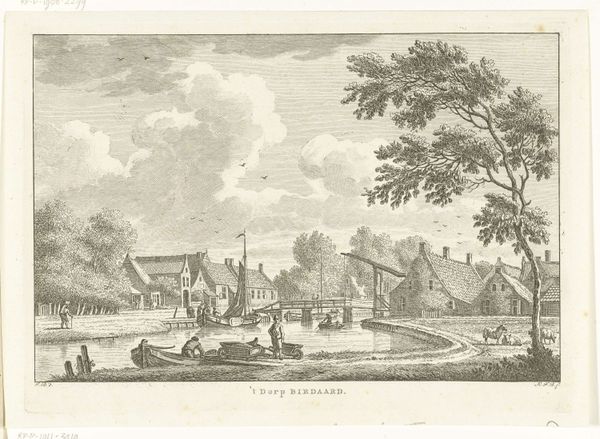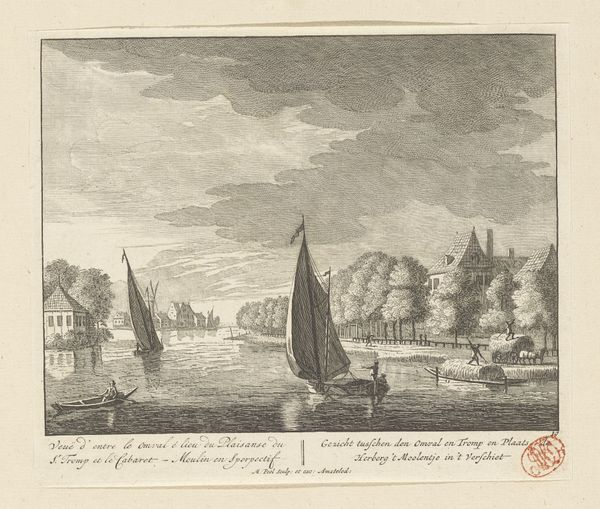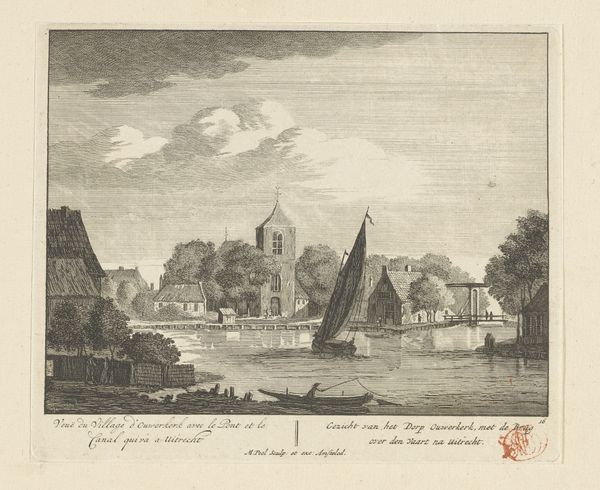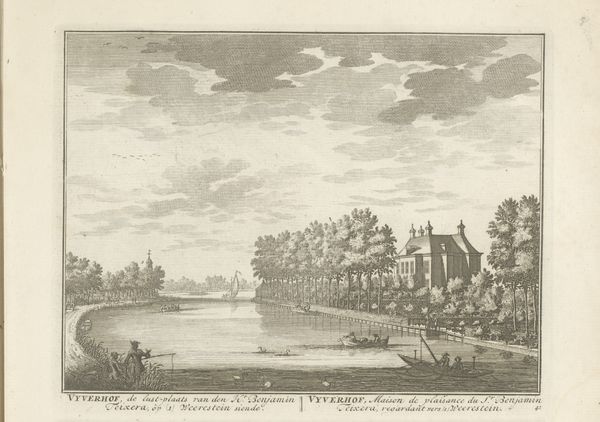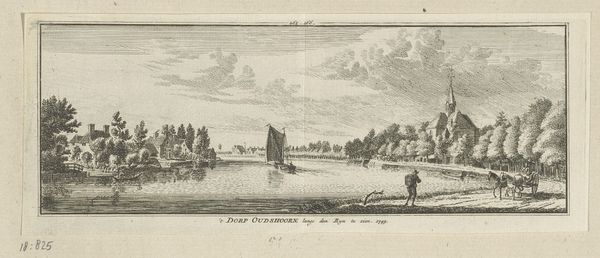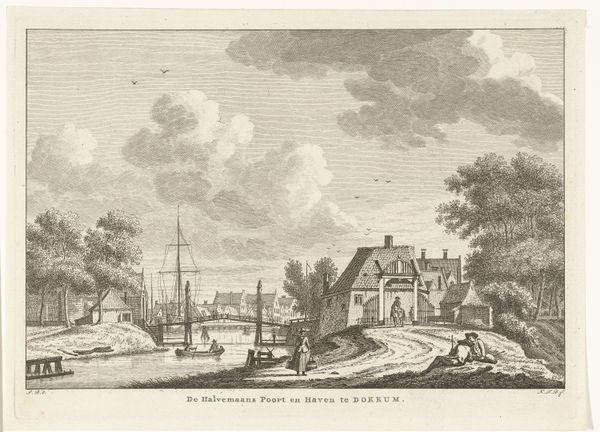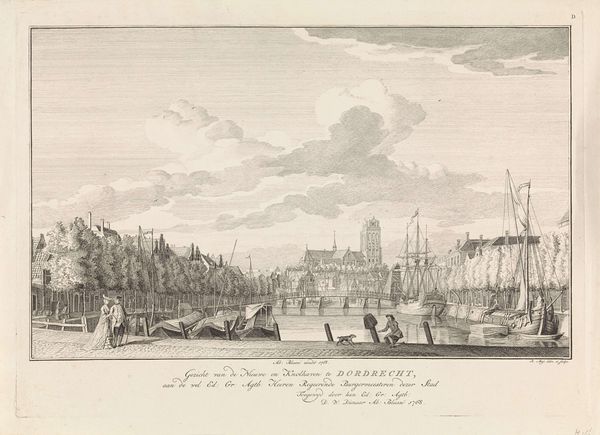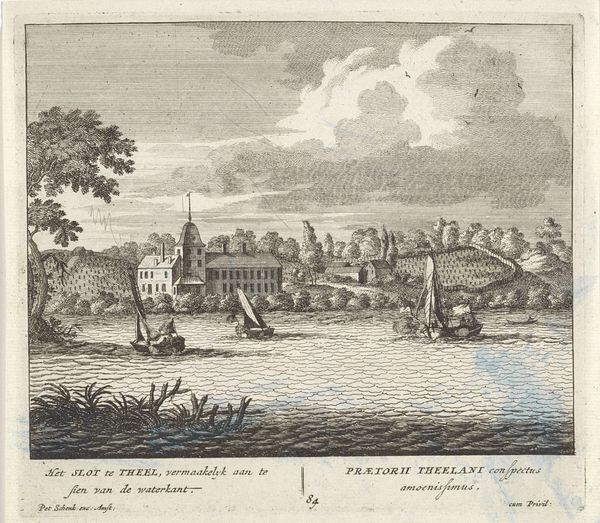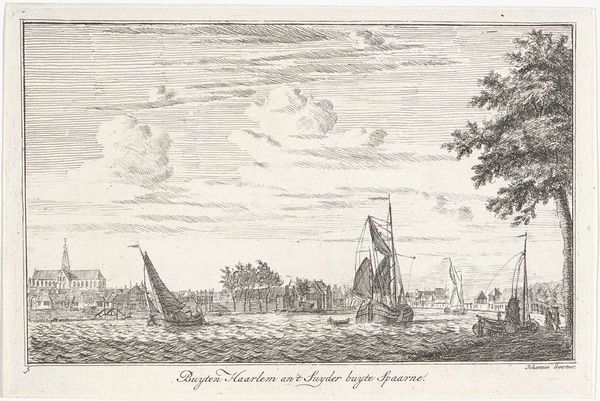
Dimensions: height 162 mm, width 208 mm
Copyright: Rijks Museum: Open Domain
Curator: This is "Huis aan een vaart," or "House on a Canal," an engraving by Hendrik Spilman, created sometime between 1760 and 1796. Editor: It's quiet. Melancholy, almost. The light seems muted, filtered through those heavy clouds. The tiny figures in the boats are dwarfed by the building and the landscape; it speaks to the scale of humanity. Curator: The image depicts a scene in Amsterdam. Look closely at the precise lines of the engraving, notice how Spilman rendered texture and form using only varying densities of lines. The level of craftsmanship is striking, each line a deliberate mark. Editor: And considering the social context of the time, were these leisurely canal trips truly accessible to everyone, or were they, like the impressive architecture itself, symbols of wealth and status for the privileged few? It is about labour too and unequal consumption practices. Curator: Certainly. The production of prints like this also tells us about the development of the art market and the rising demand for visual representations of urban landscapes, consumed by a burgeoning middle class. The engraver himself would've needed training, access to materials. What did labor look like? Editor: Right, we can think of Fouquet Junior, named in the imprint as "publisher." The artwork speaks also to the networks involved in disseminating visual imagery and perpetuating specific narratives of Dutch society through printmaking. Were marginalized groups depicted? How are buildings being valued and framed within an ever shifting Amsterdam? Curator: Spilman shows the technical skill necessary to represent the canal, architecture, even the sky, with minimal but precisely placed strokes. Considering the tools available to Spilman at this moment and its reliance on specific techniques of acid etching as an industrial and manual practice is useful. Editor: For me, I cannot separate art from lived experiences; what historical oppressions and power structures are at play and embedded into what we are seeing. The location might speak to themes of cultural identity as well. Curator: Thinking about this print solidifies an appreciation for the artist's contribution, from the concept to the execution with copper and acid; all reveal a unique perspective into an important historical moment and its making. Editor: Reflecting on it, art pieces offer us ways to understand the world in more nuanced ways and provide context for current social commentary through historical framework and interpretation.
Comments
No comments
Be the first to comment and join the conversation on the ultimate creative platform.

